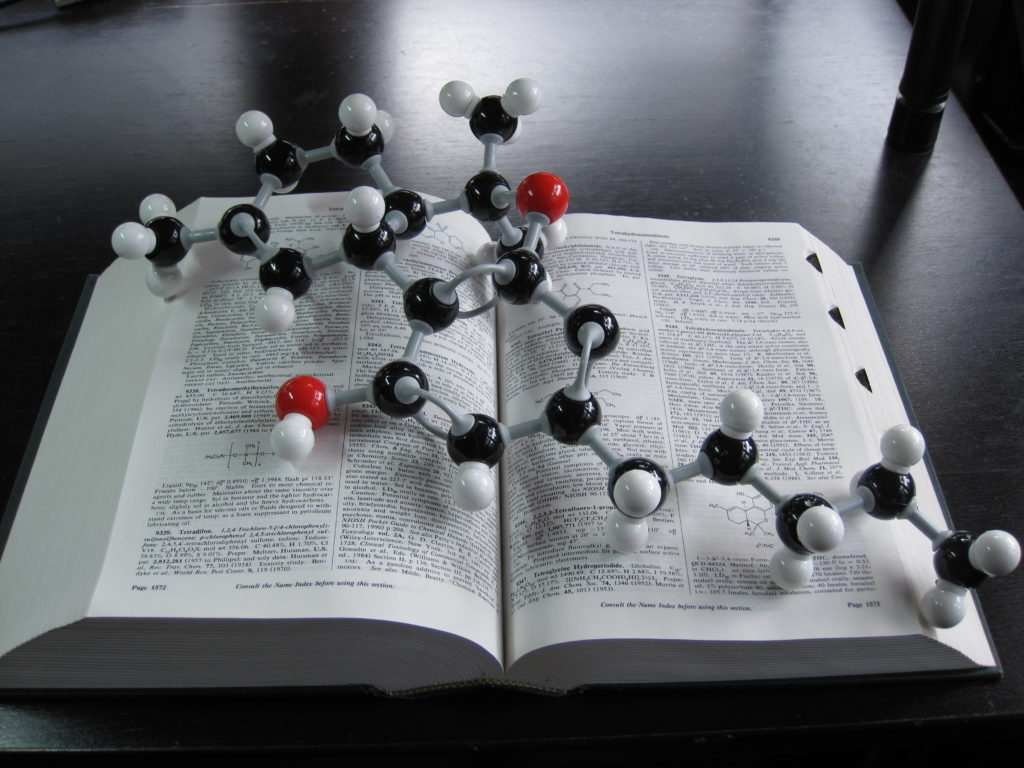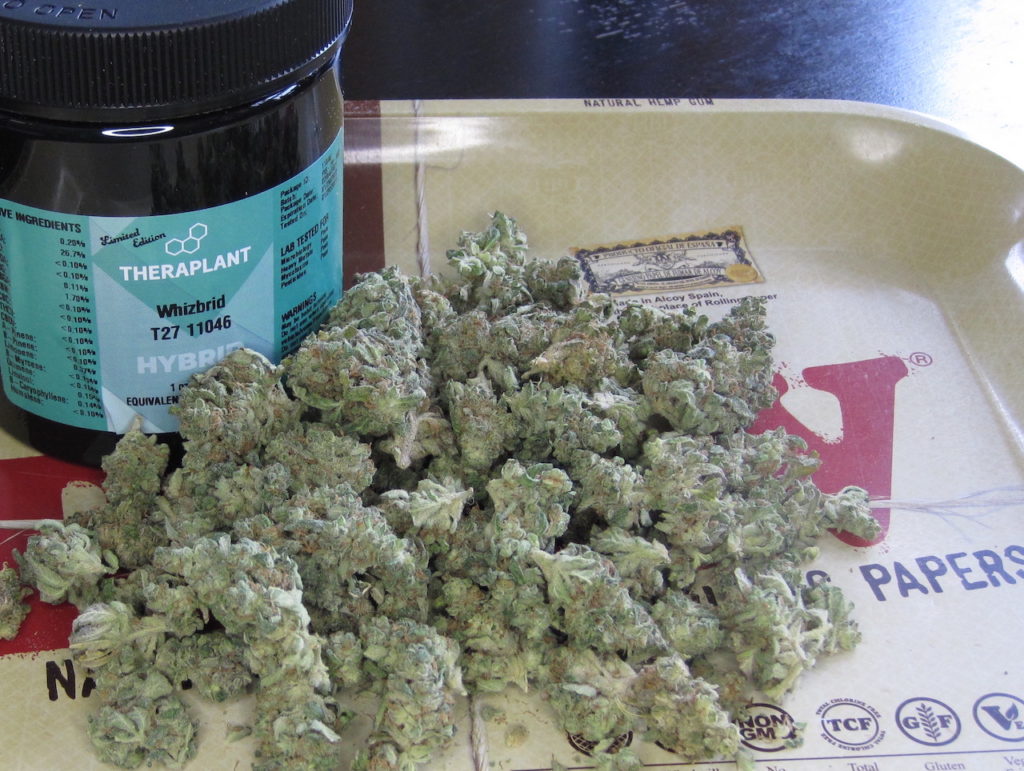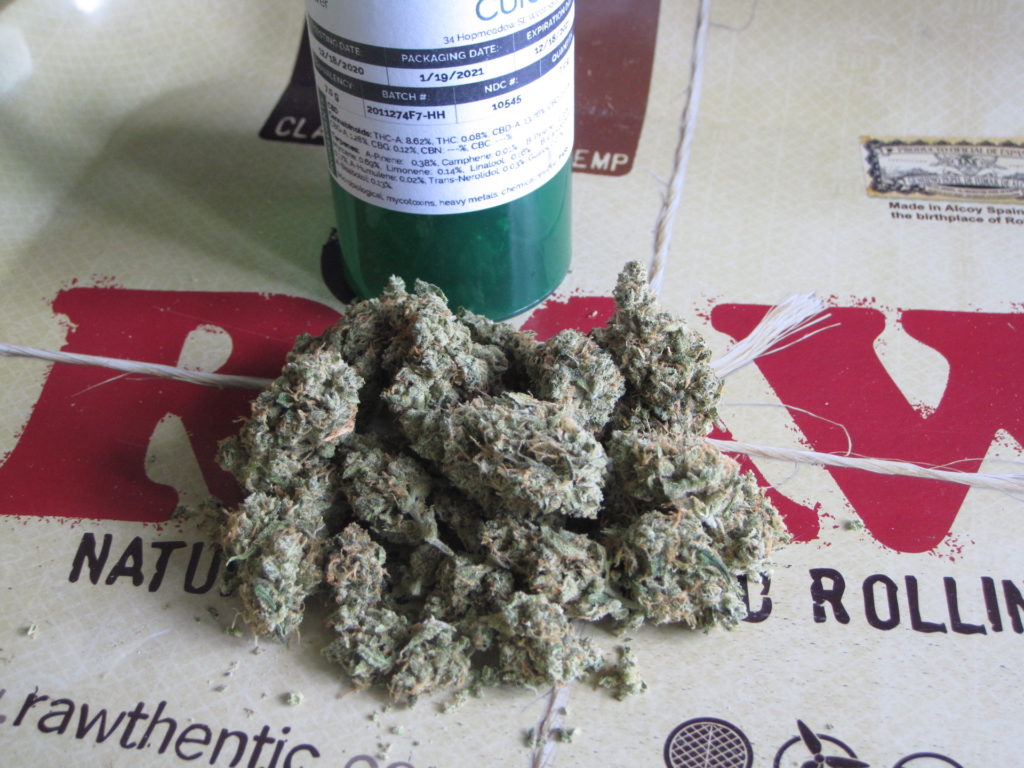
Cannabis has been a friend of humankind since before the written word”
– Martin Lee, Project CBD Director and Cofounder
I figured it was high time (Get it? 🤣) that I took an in-depth look at CBD on this site.
Not everyone I work with for ulcerative colitis or Crohn’s disease is in the U.S. or in a state in the U.S. where medical or recreational marijuana is available.
Further, some of my clients just don’t want to deal with the psychoactivity of the THC in a higher-THC medical marijuana product.
Cannabidiol (CBD) is a 50-state legal compound when it’s derived from hemp.
Every state in the U.S. (and some countries) allow hemp-derived CBD supplements as over the counter nutritional supplements.
In this post, we’ll take a closer look at the cannabinoids and CBD in particular.
CBD has become a highly interesting compound due to its myriad medicinal effects as well as its legal status.
The Chemistry of Cannabis and the Major Cannabinoids

A class of compounds called cannabinoids are the main phytochemicals present in cannabis and a major source of its medicinal properties.
Though THC, tetrahydrocannabinol, has gotten most of the positive and negative press over the years, it’s not the only cannabinoid present in the cannabis plant.
There are 113 cannabinoids currently identified and over 400 total chemical compounds in cannabis.
THC is the most prevalent cannabinoid in cannabis today with some specifically-bred, high-CBD medical strains now becoming commonly available as well.
THC and CBD
According to Martin Lee, a leading expert on CBD, THC and CBD used to be present in marijuana plants in a roughly 1:1 ratio. During the 60’s and 70’s, cannabis growers in Northern California bred strains selectively to increase THC and create the “perfect” high.
Non-psychoactive cannabinoids like CBD were mostly unknown and quite uninteresting due to their non-psychoactive nature.
It’s interesting to note that the high-CBD medical marijuana I currently use is a Haleigh’s Hope cross with higher THC from Curaleaf called HH Red. The ratio of THC to CBD in that flower is roughly 1:1. (Technically, it’s 1.5:1.)
Cannabinoid Medicine
Both THC and CBD are strongly anti-inflammatory.
THC and medical marijuana are routinely prescribed for autoimmune and inflammatory illnesses like multiple sclerosis, Crohn’s disease and rheumatoid arthritis.
CBD and THC also influence pain receptors and are relievers of both acute and chronic pain.
Regarding mental illnesses like anxiety, depression and post-traumatic stress disorder (PTSD), the endocannabinoid system also plays a role in these illnesses and cannabinoid therapy has been shown to be effective with them as well.
If you’d like to learn more about how physical illness, emotional illness and spiritual healing all interact, you can read my blog post Ulcerative Colitis, Codependency and Interpersonal Boundaries – Psychological and Spiritual Factors in Inflammatory Bowel Disease.
How CBD Medicine was Born
Over the last 10 years, growers began to look seriously at breeding high-CBD strains of medical cannabis. Much of this work was fueled by growing awareness that CBD could calm seizures in children with Dravet syndrome without getting them high.
A grower in Colorado successfully bred a high-CBD, low-THC marijuana strain and named it Charlotte’s Web in honor of Charlotte Figi.
Little Charlotte later became somewhat of a “poster child” for medical cannabis and CBD when she and her family were featured in the CNN documentary “Weed,” hosted by Dr. Sanjay Gupta.
The documentary was overwhelmingly pro-cannabis and Dr. Gupta became a strong and outspoken proponent of medical cannabis.
THC as Medicine

There’s a somewhat simplistic idea in the popular media that considers THC to be the intoxicating compound in cannabis and CBD to be the healing or medicinal one.
THC bad. CBD good. Hulk smash.
This is a highly oversimplified way of looking at things and we’ll discuss it in more detail soon.
The Human Endocannabinoid System
Discovered by Israeli scientist Dr. Raphael Mechoulam in the early 1990s, the endocannabinoid system – the human body’s receptor system for cannabinoids – regulates a number of important biological processes in the body.
This is why cannabinoids and terpenes heal as they do. It has a strong connection to both our stress response system as well as various inflammatory and regulatory processes in the body.
This, for example, is why a stress-related illness like PTSD have proven to be highly treatable with medical marijuana.
CBD as Medicine

The Project CBD website lists over 50 conditions CBD has potential to treat effectively.
This list includes PTSD, the inflammatory bowel diseases, irritable bowel syndrome, anxiety and depression. Also on the list are nausea, multiple sclerosis, Parkinson’s disease and fibromyalgia.
Choosing Quality, Effective and Legal Cannabis Medicine
There are multiple choices and considerations to be aware of when investigating CBD and cannabis medicine. Much of this is dependent on where the patient lives and what the current medical or adult-use (recreational) cannabis laws are in that location.
Whole-Plant, Cannabinoid-Only, Hemp-Derived and Other Considerations
Keeping things close to how they’re found in nature can be a big advantage in our quest for better health.
Generally, whole-plant derived extracts are far superior to single-molecule preparations that contain a single cannabinoid like THC or CBD but exclude the other plant components.
In states with a robust medical or adult-use program, CBD preparations from whole marijuana flower or hemp will generally be available.
In states with stricter cannabis laws, CBD-only preparations, which is a whole-plant derived supplement from hemp, are legally available.
THC/CBD Medical Cannabis
Virtually any state that permits medical or adult-use of cannabis will have whole-flower or whole-flower extracts of high-CBD cannabis readily available. These will be strains like Charlotte’s Web, Canna-Tsu or Haleigh’s Hope to name just three.
The THC in each strain varies as does the ratio of THC to CBD.
Martin Lee from Project CBD has frequently suggested that a 1:1 THC to CBD ratio can be optimal for many – provided the psychoactivity of the THC isn’t a problem.
Further, he suggests that whole-plant extracts of marijuana also contain a number of other cannabinoids as well as a full complement of medicinal compounds called terpenes.
CBD-Only Medical Cannabis
Medical cannabis dispensaries are also likely to carry a selection of CBD-only cannabis extracts. These are important when THC isn’t desired or required, but the patient still wants a whole-plant derived preparation.
THC-Only and CBD-Only Pharmaceutical Options
A synthetic THC-only preparation called Marinol® is available by prescription in all 50-states. Martin Lee has suggested that, in states with restrictive medical cannabis laws, Marinol by a doctor’s prescription can be combined with a 50-state legal CBD product to create a legal THC/CBD healing protocol.
GW Pharmaceuticals is also developing Epidiolex which is a single-molecule, synthetic CBD preparation.
Selecting a Quality, 50-State Legal CBD Product
There are many options on the market when it comes to choosing a 50-state legal CBD supplement.
There are three key areas a consumer, especially one using CBD for health purposes, should look at when choosing a CBD product:
- Sourcing
- Processing
- Testing
Sourcing
As with all functional foods, it starts with the source. In the case of CBD, the source should be industrial hemp grown in either Europe or the USA and preferably organic. Both the USA and Europe have growing requirements that are far more stringent than other countries.
Processing
The second consideration is processing.
Consumers should look for a non-toxic form of extraction such as Supercritical CO2. This is a much cleaner and more natural form of processing than forms that use toxic chemicals or solvents like butane.
Author’s Note: Food Grade ethanol is another safe extraction solvent according to Martin Lee.
Testing
Finally, consumers should only be using products that can provide a certificate of analysis from an independent testing laboratory. Testing results should include potency and purity data and they should also show the product to be free of solvents, bacteria and mold.
This testing is particularly important because we’re in the earliest stages of CBD regulation and many companies do the bare minimum testing that’s required by law.
This basic required testing doesn’t generally include things like molds, bacteria or heavy metals.
Medical Grade, Marijuana-Derived CBD Products are Best
If you can qualify for a medical marijuana card where you are and get a CBD or THC/CBD product from a medical marijuana dispensary, by all means do it.
There’s a difference between the hemp-derived CBD described above and the medical stuff harvested from real medical cannabis grown by a reputable grower.
Here’s a more technical discussion of why you should go for medical marijuana CBD as opposed to the hemp-derived stuff: Cannabis vs. Hemp.
Conclusion
CBD and high-CBD medical marijuana can be a strong component in a healing program for ulcerative colitis, Crohn’s disease and a number of other health disorders.
Have you used CBD or high-CBD marijuana in your own healing program? Are you considering it?
Any questions or science I didn’t address here? Let me know in the comments!
[…] I’ve written extensively about the chemistry of CBD and THC in the post CBD and High-CBD Medical Marijuana – The Principal Guide […]